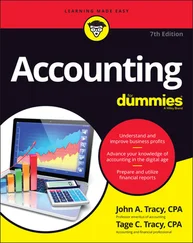EXHIBIT 3.1 STATEMENT OF CASH FLOWS FOR YEAR
| Dollar Amounts in Thousands |
| Cash Flow from Operating Activities |
|
|
| Net Income (from Income Statement) |
$ 2,642) |
|
| Accounts Receivable Increase) |
(320) |
|
| Inventory Increase) |
(935) |
|
| Prepaid Expenses Increase) |
(275) |
|
| Depreciation Expense) |
785) |
|
| Accounts Payable Increase) |
645) |
|
| Accrued Expenses Payable Increase) |
480) |
|
| Income Tax Payable Increase) |
83) |
$ 3,105) |
| Cash Flow from Investing Activities) |
|
|
| Expenditures for Property, Plant, and Equipment) |
$ (3,050) |
|
| Expenditures for Intangible Assets) |
(575) |
(3,625) |
| Cash Flow from Financing Activities) |
|
|
| Increase in Short-Term Debt) |
$ 125) |
|
| Increase in Long-Term Debt) |
500) |
|
| Issuance of Additional Capital Stock Shares) |
175) |
|
| Distribution of Cash Dividends from Profit) |
(750) |
50) |
| Decrease in Cash During Year) |
|
$0(470) |
| Cash Balance at Start of Year) |
|
3,735) |
| Cash Balance at End of Year) |
|
$ 3,265) |
The income statement of our business example ( Exhibit 2.1) divulges 10 lines of information and its balance sheet has 21 lines. So, already you have 31 items of information, which take time to read. The statement of cash flows adds another 20 lines of information to read. Is this financial statement worth the additional time it takes to read it? What’s the payoff?
For many financial report readers, the main value of the statement of cash flows is that it discloses the cash flow from operating activities . They zero in on this number, and may not read any other line of information in the financial statement. This key metric is commonly called cash flow from profit . In its income statement for the year ( Exhibit 2.1), the company reports that it earned $2,642,000 net income, or bottom-line profit. In its statement of cash flows for the year ( Exhibit 3.1) the company reports that it generated $3,105,000 cash flow from operating activities, that is, from profit-making activities. In short, profit is $2,642,000 in one financial statement and $3,105,000 in another statement. This can be confusing, to say the least.
How can cash flow from profit be higher than profit? Is one of the two numbers fake profit? Where did the extra cash come from? In other situations, could cash flow be less than profit? (Yes, it can be.) A short explanation for this discrepancy is that actual cash inflow from revenue is typically somewhat higher or lower than the amount of revenue recorded for the period. And, actual cash outflows for expenses typically differ from the amounts of expenses recorded for the period.
Cash Versus Accrual Accounting
The first section of the statement of cash flows attempts to explain the differences between cash flows and revenue and expenses, line by line. But in our experience business managers, lenders, and investors generally cannot make heads or tails of this section of the cash flows statement. The main reason is that they don’t have a clear picture of how revenue and expenses are recorded. Do you?
Exhibit 3.2compares the company’s revenue and expenses cash flows for the year with its revenue and expenses amounts for the year. The amounts for revenue and expenses are recorded on the accrual basis . This means that the transactions and other developments that affect the business are recorded when the economic event takes place, which is often before or after when cash actually changes hands. For example, this company, like many businesses, offers its customers credit. The sale is made today, but the business does not collect cash until a month or two later. The sale is recorded today but the corresponding cash is not recorded until later.
EXHIBIT 3.2 REVENUE AND EXPENSES: CASH FLOWS VERSUS ACCRUAL AMOUNTS
| Dollar Amounts in Thousands for Year Just Ended |
|
Cash Flow Amounts |
Accrual Amounts |
| Sales of Products |
$151,680) |
$152,000) |
| Cost of Products) |
$(34,760) |
$(33,800) |
| Operating Costs) |
$(11,630) |
$(12,480) |
| Depreciation Costs) |
$.(000.0) |
$.(0.(785) |
| Interest on Debt) |
$.(0(520) |
$.(0.(545) |
| Income Tax) |
$).(1,665) |
$(.(1,748) |
| Net Amount) |
$.(.3,105) |
$.(.2,642) |
Notice in Exhibit 3.2that the differences between cash flows and accrual amounts do not differ too much—except for those related to depreciation . The cost of a long-term operating asset, such as a building or piece of heavy equipment, for example, is allocated over the operating life of the asset. The allocation of its cost over the useful life of an asset is a prime example of the accrual basis of accounting. Deprecation for the year is not a cash outlay; cash was paid when the asset was acquired. Notice in the “Investing” section of the cash flows statement that the business made major cash outlays for long-term operating assets.
A document comparing cash flows with accrual amounts, like the one shown in Exhibit 3.2, is a tool of explanation. It is not a financial statement. It is not included in a financial report with the three required financial statements (i.e., income statement, balance sheet, and cash flows statement). Exhibit 3.2should help you understand why cash flow from operating activities differs from bottom-line net income for the year. In reading an income statement, keep in mind that you are reading accrual-based amounts for revenue and expenses. Bottom-line net income is an accrual-based number. The net cash flow result of revenue and expenses is found in the statement of cash flows. Chapter 14offers further analysis of cash flow, in particular cash flow from profit (or loss if that’s the case).
Financial Tasks of Business Managers
So far, we have introduced the three primary financial statements for a representative business example. These statements include: its income statement for the year just ended, its balance sheet at the end of the year, and its statement of cash flows for the year. Suppose you’re one of the outside stockholders of the business, meaning you’re not involved in managing the business but you have a fair amount of money invested in the business. You just received the financial report from the business. What should you look for? Here are some things that you might study to get started.
We call your attention to stockholders’ equity in the balance sheet. Its owners (one of whom is you) have invested $8,125,000 capital in the business for which it issued capital stock shares to them. (See the capital stock account in Exhibit 2.2.) Furthermore, over the years the business has retained $15,000,000 profit, which is called retained earnings . Taken together these two sources of owners’ equity equal $23,125,000. One purpose of the balance sheet is to disclose such information about the ownership of the business entity and the sources of its equity capital.
Читать дальше












